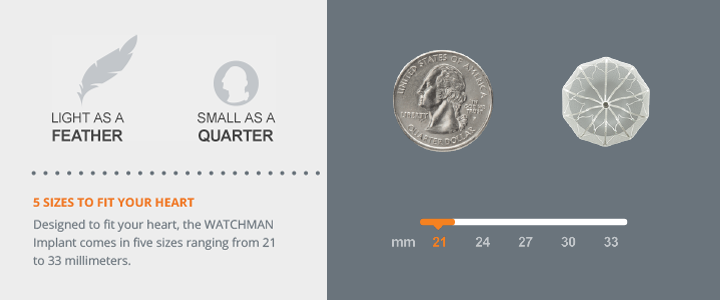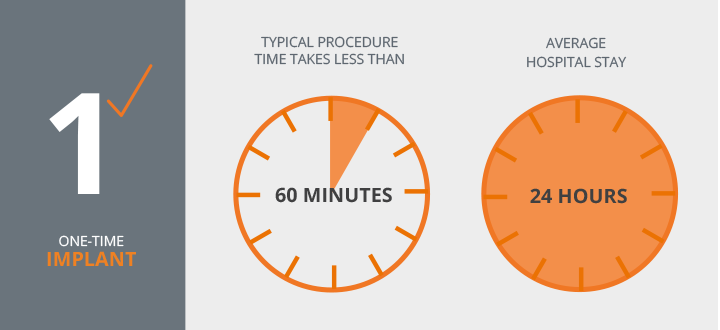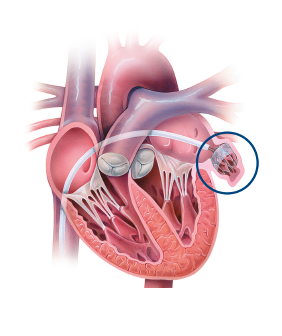ASAP-TOO Clinical Trial

Atrial fibrillation can cause blood to stick together and clot in an area of the heart called the left atrial appendage (LAA). The LAA is about the size of your thumb and looks like a small pouch on the top of your heart. Blood clots can break loose from the LAA and travel to the brain, lungs, and other parts of the body, causing a stroke.
The WATCHMAN Implant is an FDA-approved device designed to keep these harmful blood clots from escaping the LAA. WATCHMAN is a one-time implant that doesn’t have to be replaced and can’t be seen outside the body. About the size of a quarter, it’s made from very light and compact materials commonly used in medical implants.
Although most clots that come from the heart in people with atrial fibrillation develop in the LAA, stroke can also be caused by other factors, including high blood pressure and the narrowing of the blood vessels to the brain. The WATCHMAN Implant will not prevent these other causes of stroke.
WATCHMAN does not cure atrial fibrillation. Be sure to talk to your doctor about your specific situation so you can find the right treatment option to reduce your stroke risk.


How Does the Implant Procedure Work?
The WATCHMAN Implant does not require open-heart surgery and is typically performed under general anesthesia. Like in a stent procedure, your doctor will make a small cut in your upper leg, insert a flexible tube (catheter) into a vein, and guide WATCHMAN into your heart.
Then your doctor will cross from the right to the left side of your heart. Once the WATCHMAN Implant is in place, he or she will release the implant to permanently seal off your LAA. Over time, your heart tissue will grow over the implant.
Typically, patients stay in the hospital overnight 1-2 nights.


PATIENT SAFETY INFORMATION
The WATCHMAN Device is a permanent implant designed to close the left atrial appendage in the heart in an effort to reduce the risk of stroke. With all medical procedures there are risks associated with the implant procedure and the use of the device. The risks include but are not limited to accidental heart puncture, air embolism, allergic reaction, anemia, anesthesia risks, arrhythmias, AV (Arteriovenous) fistula, bleeding or throat pain from the TEE (Trans Esophageal Echo) probe, blood clot or air bubbles in the lungs or other organs, bruising at the catheter insertion site, clot formation on the WATCHMAN™ Closure Device, cranial bleed, excessive bleeding, gastrointestinal bleeding, groin puncture bleed, hypotension, infection/pneumonia, pneumothorax, pulmonary edema, pulmonary vein obstruction, renal failure, stroke, thrombosis and transient ischemic attack. In rare cases death can occur. Be sure to talk with your doctor so that you thoroughly understand all of the risks and benefits associated with the implantation of the WATCHMAN Device.
